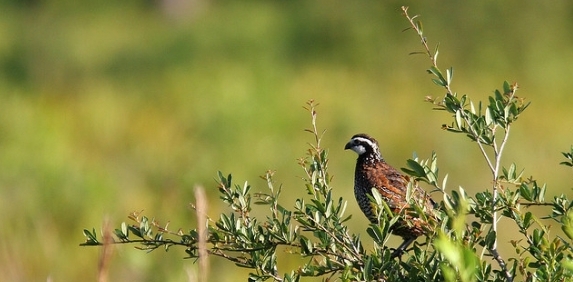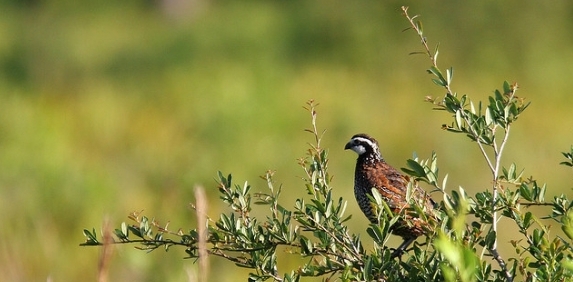It’s been a tough run for quail over the past few years. Persistent drought has hammered many species, but bobwhite quail have really suffered due to poor nesting habitat across Texas. But quail respond readily to the addition of water, as was the case in 2014. Much-needed rainfall at the right times this year are helping to bolster bobwhite quail numbers and should lead to improved hunting compared to last season, according to Texas Parks and Wildlife Department biologists.
Texas quail season opens statewide on October 25 and runs through February 20, 2015.The daily bag limit for quail is 15, with 45 in possession. Legal shooting hours for all non-migratory game birds are 30 minutes before sunrise to 30 minutes after sunset. The bag limit is the maximum number that may be killed during the legal shooting hours in one day.

Continued drought conditions over much of the core quail hunting areas in the spring and summer of 2013 resulted in below average production last year and many ranches opted to limit hunting last season in hopes to aid local recovery.
Texas Parks and Wildlife Department (TPWD) quail surveys show modest recovery this year, thanks to adequate range conditions during the nesting season. Biologists stress that additional winter rains are needed to aid continued population recovery into next spring and summer.
One region indicative of a positive shift is the Gulf Prairies where TPWD quail surveys showed 19.9 bobwhites were observed per route compared to 11.3 last year and is a record high for this area.
“Bobwhite are less dependent on rainfall in this region, where there is usually enough moisture available for nesting,” said TPWD wildlife biologist Robert Perez. “Habitat conditions in areas of native rangeland are in good condition. Hunters should focus on the central and lower coast in native prairie habitats.”
Most of the quail country around the state saw similar improvement in quail numbers compared to last year, although still below the long term average since quail surveys began in 1978. In South Texas, for example, surveys showed 11.6 birds per route compared to 6 last year. This is below the long term average of 17.4 and is predictive of a below average hunting season for the region as a whole. However, field staff and ranch-level surveys on private and public lands are reporting above average numbers in many areas.
In the Rolling Plains, rangelands are in recovery and where grazing has been reduced, Perez said prime nesting habitat is definitely more available than last year. Field reports suggest that many areas have improved enough to support limited hunting and last year’s hot spots will likely improve this season.
“Although there are certainly areas within each region where some quail hunting opportunity remains, this survey is not designed to detect changes in localized populations, especially in fragmented landscapes,” Perez cautioned. “Looking forward, most of the core Texas quail hunting regions did get a flush of vegetation and insects and a corresponding increase in bobwhite reproductive efforts.”
